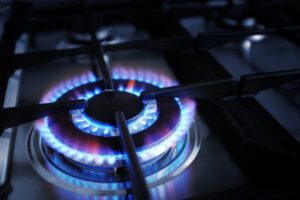When selecting a fuel source, your first concern is often efficiency, due to its direct correlation to cost. Our energy concerns often come down to a simple matter of cost versus benefit, and we’re all about getting a rock bottom deal. Yet in recent years, new concerns have arisen regarding the impact our cheap, efficient energy is having on the environment. As more and more pollution floods our air, water, and bodies, it is becoming increasingly apparent that there are hidden costs to fuel that must be considered. Even when choosing a fire training system, the type of fuel being used can have an impact on the environment, and it is your responsibility to consider that impact – and the cost of reducing said impact.
Traditional structural firefighting relied on acquired structures: residential or commercial buildings donated to the fire department. This method of training has a significant carbon footprint and it also presents a variety of safety concerns. Even with careful inspection it is nearly impossible to uncover every potential structural concern in the building. Furthermore, fuel sourcing may not be directly visible.
A second means of structural firefighter training is in purpose-built burn buildings that traditionally use wooden pallets and hay as the fuel source. This is a more controlled burn, but flames cannot be extinguished without actually pushing them out, and the emissions are significant. Additionally, the water run-off is considerable and there is a high chance of damage to protective gear.
You’re Faced with a Choice
Reducing your system’s carbon footprint is not necessarily a matter of adopting wind, water, or solar energy. These are admirable sources of power, but they have three problems when it comes to their implementation: first and foremost, they are not widely available, and so you cannot reliably have your power provided in this manner. Second, it is expensive to install your own, separate alternative power sources – often prohibitively so. Third, the use of alternative energy would make it very difficult to simulate the real fires that a fire training system is intended to prepare its users for.
Indeed, when it comes to a fire training system, you are almost obligated to use some form of fossil fuel. Are you then doomed to add yet more carbon to the environment? Well, frankly, yes, but there are ways to ensure that you add the least amount possible; specifically, you can use propane and natural gas rather than other fuel sources for your training systems.
Saving the Planet
Natural gas has borne some of the blame for greenhouse gases, but the truth is that it is a relatively clean fuel source when it is burned. The negative effect natural gas has on the environment only occurs when the gas is allowed to escape into the atmosphere during drilling or transportation – as in, when the necessary precautions are not taken. As companies develop superior leak detection systems, the environmental impact of natural gas is reduced.
Gasoline, diesel fuel, hay, coal, and other less environmentally-friendly hydrocarbons release oxides of sulfur and nitrogen, along with elements of mercury, selenium, and arsenic into the air, not to mention the particulates and non-combustible slag that is left after burning. These are essentially poisons being released into our environment, and when burnt, do a lot to increase your carbon footprint, so to speak. Natural gas, on the other hand, emits considerably less poisons and fumes into the air when burned.
A Cleaner Future
In fact, gas-fueled fire training systems and simulators resolve all concerns with run-off and emissions. Numerous studies by the US Navy and the Federal Aviation Administration have shown that the runoff from gas-fueled simulators can be drained into ordinary residential sewer systems without filtering or separation since contaminants are at extremely low levels – no worse than what comes out of a residence. Further, non-toxic simulated smoke alleviates air pollution concerns whether water-bases or mineral oil-based smoke machines are used. Smoke dissipates within a few feet from a training structure, thereby eliminating concerns of suburban-sprawl or not in my backyard (nimby) protests. This has allowed for training in the most population dense cities and areas in the world.
When it comes to your fire training system, there is no better way to save money, increase efficiency, and reduce your carbon footprint than to choose natural gas and propane systems over Class A and other hydrocarbon systems. The fuel used will have a long-term impact not just on your bottom line – although that is certain to be strongly affected – but also on your organization’s local carbon footprint. As your goal is ultimately to prepare firefighters to help safeguard and protect your region against disaster, why not help to protect it against the disaster of pollution?
Indeed, some states are already taking steps to limit the carbon emissions that businesses and other organizations create. In time, it may be a requirement for your organization to meet certain carbon emissions standards, much as automobiles must now do, and planning ahead for that day may save your organization quite a bit of money – and yourself a headache – in the future.
So, save the planet, save money, and save yourself stress down the line – the choice between natural gas or propane and other fuels like gasoline, diesel, wood, and hay seems clear. Fortunately, Fireblast’s training systems are fueled by natural gas and propane. Merely by reading this, you have taken the first step towards a cleaner, more affordable future
Contact Fireblast Global at 1-951-277-8319 for more information on our fire training services and how we can help you fight fires the smart way.

